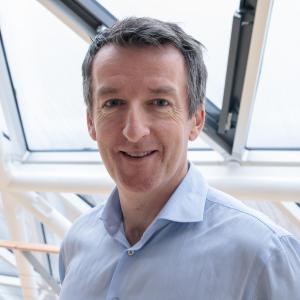With a fast-growing population, Luxembourg education needed an overhaul to keep up. Here’s how it was done.
Find out how Luxembourg coped with fast population growth in its schools:
- Fast population growth put Luxembourg education under pressure until the investment from the European Investment Bank
- How to make a school energy efficient
- How a renovated school builds student motivation
Subscribe to Future Europe on iTunes, Spotify and Acast.
Future Europe features a podcast episode from each of the EU’s 28 Member States. Each episode tells the story of a project that illuminates the way Europeans will live in the future. All the stories are told through the voices of people involved in the projects.
Luxembourg education key to small country’s future
Luxembourg’s population is growing fast. But the country’s schools weren’t able to keep up. So the duchy invested in a big programme of renovation and construction to make Luxembourg education fit to handle the challenge.
The small country, which adjoins Germany, Belgium and France, currently has 560,000 inhabitants, but every year adds at least 15,000 people. The government is investing €679 million for education projects, including a €300 million loan from the European Investment Bank, the EU bank. That’s key to the future of Luxembourg.
“When you touch education,” says Didier Bosman, who helped appraise the loan for the EIB, “you touch the economy and the development of the country, directly.”
Environmentally friendly Luxembourg education investment
The EIB loan accelerated the completion of these Luxembourg education projects, adds Bosman, who’s trained as an architect. “When we give a loan, a lot of projects are realised in a shorter time.”
To develop the education sector, Luxembourg is:
- Constructing a new national library
- Building six new schools and refurbishing ten existing schools
- Ensuring long-term benefits with state-of-the-art facilities that are also environmentally friendly
Renovation for a Sixties school
One of the schools rebuilt and refurbished is Luxembourg’s oldest, the Athénée.
The school has a four hundred-year-old history, but the 1960s saw it relocated from the city centre to a new building in the southwest of the city. A notable example of 1960s architecture, the Luxembourg government wanted to preserve its original features as it undertook the refurbishment.
The redevelopment retained many original external features, while modernizing the interior.
Carlo Reckel was responsible for energy consumption and building technology on the project. His job is to ensure the school provides a state-of-the-art learning environment with very high energy performance standards.
“We put in insulation and the whole inside of the building has been completely renovated and refurbished, so people can profit from a very efficient modern building,” says Reckel, “and the whole city isn’t robbed of a building that meant something and is quite a landmark.”
Student motivation increases
Headmaster Joseph Salentiny is delighted with the result. On the day the school reopened, the children’s committee came to him and announced, “School is wonderful. We enjoy it here. The project is well done.”
The current vice president of the students committee, 18-year-old Egan Paquay, says the school is an inspiration. “When you have a building of such quality you are always motivated to learn and outdo yourself,” he tells Future Europe. “It gives you a push.”
The new National Library: the memory and the future of the country
Part of the Luxembourg education scheme is the new National Library, set to be completed by 2020.
The existing premises ran out of space and the storage conditions were inadequate. The 1.8 million documents in the library are currently stored in several sites around the city. When the new building is completed, materials will be stored in one place, making it easier for staff and the general public to access them.
Christine Kremer, who works at the National Library, says it will serve as “the memory of the country, and the future of the country, because young people come here to have access to resources they don’t normally have.”
For Carlo Reckel, the project’s legacy will be felt long into the future. “It’s what we build our future on—education.
